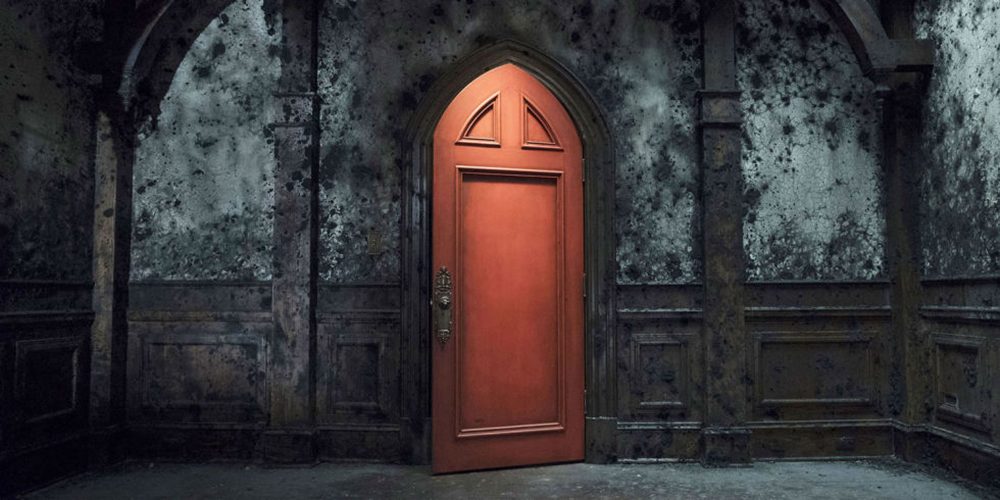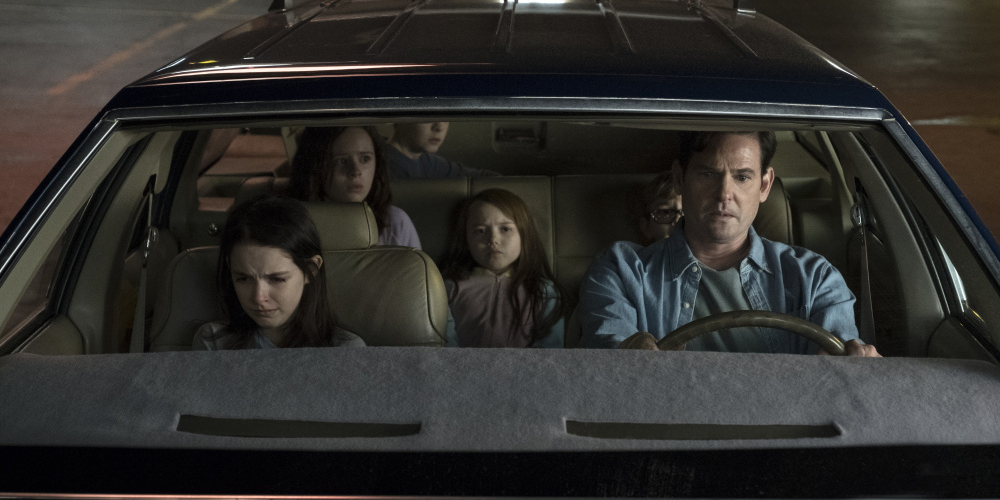Hill House is a show that unravels in bits and pieces over the course of ten episodes, a true slow burn that doesn’t let you see the full picture until the end. It is the story of the Crain family—Hugh (Henry Thomas, Timothy Hutton) and Olivia (Carla Gugino) and their five children—in two different timelines: the summer of ’92, where they lived in Hill House to restore it, and present day, where they have gathered for the funeral of the youngest child after she returns to the house and dies there.
The first five episodes cover each child from eldest to youngest, hopping back and forth between their interactions as adults and that one haunted summer that changed their lives forever. Accusations that the story takes too long to get ‘started’ are valid, but I found the nonlinear aspect to be an effective storytelling device. Over the course of five episodes, we really get to know these characters—what they were like as children, what makes them tick, how each of them get along as adults, and how they feel about coming together again.
Steven (Michiel Huisman) is the oldest Crain child. Pragmatic and skeptical, Steven doubts his family’s account of the past, but that hasn’t stopped him from using the experience to jump start his writing career. Steven’s famous book has given him considerable wealth and notoriety, but it has also utterly alienated him. His sisters hate that he has turned their tragedy into a sideshow, and even his wife has separated from him due to his inability to cope with his past. Steven makes sense as a character, but I found it increasingly hard to sympathize with him as the story went on and the truth was peeled back layer by layer.
Shirley (Elizabeth Reaser) is the oldest daughter, emotional and overbearing. She is a nurturing person with a lot of heart who has been marked and embittered by death and the destruction of her family. She distanced herself from Steven after the publication of his book and has never forgiven him for not supporting their family as the eldest sibling should. Shirley is a complicated character who slowly unravels over ten episodes; undoubtedly, some viewers will lose sympathy for her along the way, but I found her mistakes only made her more interesting. As a mortician, Shirley receives the body of her youngest sister and hosts her grieving family, but you get the idea that Shirley was always the family member around whom the others congregated because she put forth the most effort.
Theodora (Kate Siegel) is the quintessential middle child, an outsider in her own family, but much of her alienation is self-imposed. It is revealed that Theo has the ability to sense a person’s emotions when she touches them, but the pain her family went through has caused her to withdraw, physically and emotionally, from all human contact. Shirley is the only one Theo is close to, but even they harbor secrets from one another that come out over the course of the season. Theo’s abilities make her one of the most intriguing characters in Hill House, but they are rarely utilized in the storytelling.
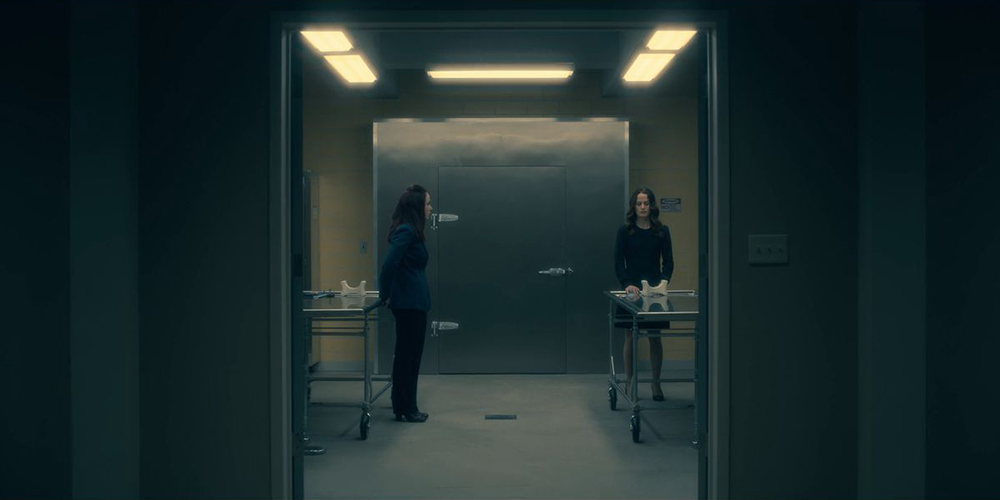
Luke (Oliver Jackson-Cohen) is one of the twins, the youngest in the family. As an adult, he has coped with the past by becoming an addict and has subsequently lost all sympathy from his long-suffering family members. The first time we meet Luke as an adult, he is stealing from his older brother and seems to be using again, despite being fresh out of rehab; by the time Luke’s episode comes around, you see the other side of that encounter and the history that leads up to it, and it is absolutely heartbreaking. Luke is such a far cry from the timid, sensitive child he was in ’92, but a quarter century of being gaslit by your entire family can do some serious damage to a person’s psyche.
Finally, there is Nell (Victoria Pedretti), who, alongside her twin brother, suffered the most as a result of Hill House. As a depressed, slightly manic adult, Nell has never recovered from the trauma of that summer or the fact that no one believes her story. Weakened by further tragedy as an adult, and the dissolution of her family, Nell is drawn back to Hill House, where she ostensibly commits suicide. The first five episodes give us the how of Nell’s death; it takes the remainder of the season to understand the why.
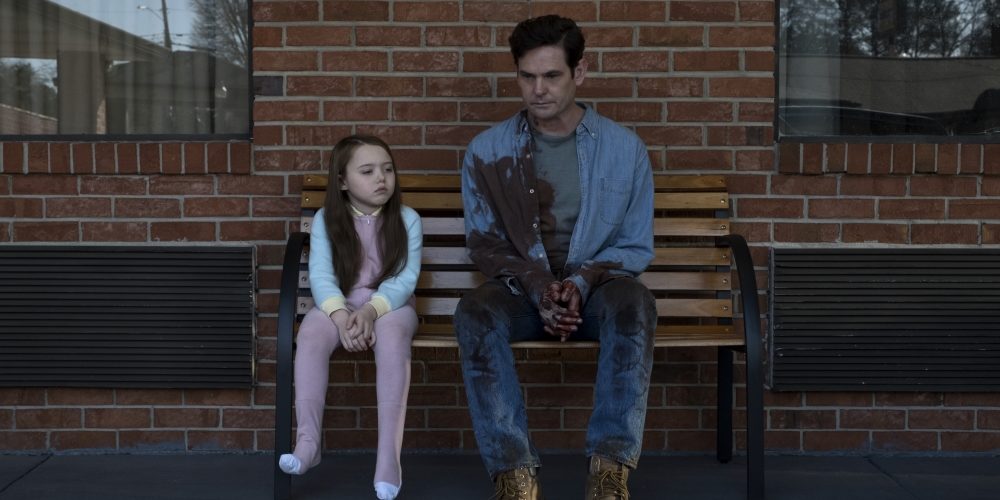
The sixth episode, Two Storms, in which the family is united for the first time in decades for Nell’s viewing, is the best of the season. It begins with a series of one-take shots, the longest of which are 23 and 17 minutes respectively and features fourteen actors and two distinct sets. The whole thing feels like you’re watching a one act play with really impressive mechanics. Seeing the characters interact with the past truly made it feel like they were reliving it in the present. At this point, my only complaint about the show had been the decision to cast two different actors to play the dad—why not just age Henry Thomas or de-age Timothy Hutton with makeup? They are only 11 years apart, after all. Upon further introspection, I realized this scene would never have been possible using the same actor in both timelines, and I reluctantly let it go.
There are ghosts in The Haunting of Hill House—tons of them—and more than a few jump scares, but no gore. Like other viewers, I was a little disappointed that so few of the Hill House spirits were utilized; I want to know all of their stories and the house’s story too, but ultimately, that is not what this show is about. This story is about the Crains and how they systematically haunted themselves for years. Steven’s skepticism, Shirley’s denial, Theo’s dissociation, Luke’s drug use, and Hugh’s lies all effectively alienated them from each other and turned them into living ghosts, and then there is Nell who is literally haunting herself. It all comes together so smoothly to form a bigger picture that is compelling in its tragedy.
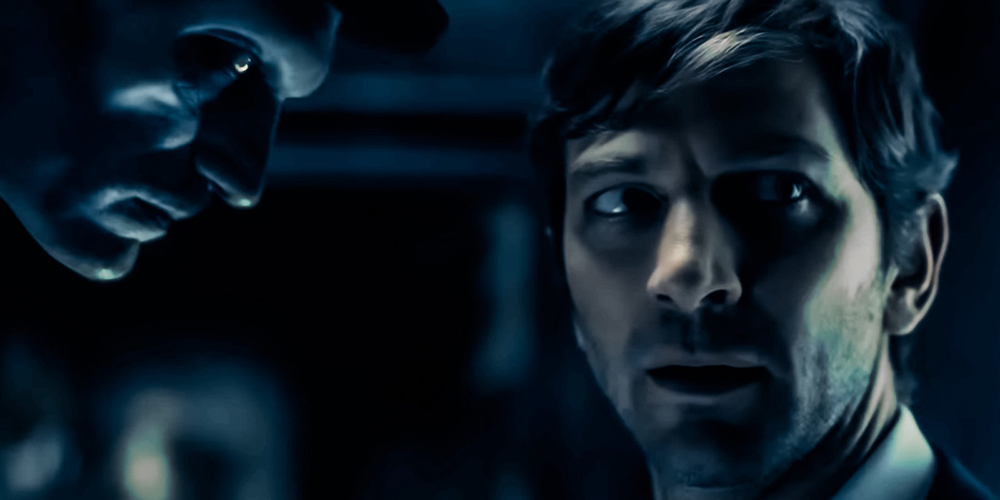
The full story, of course, is not known until we see Olivia’s backstory in the final episode. The Crain matriarch was possibly the most sensitive of them all, and her downfall is attributed to the ‘evil’ house, but I’m not sure if I agree with that. No one will ever be completely sure if Olivia’s insanity was a product of the sinister ghost whispering in her ear or a fault in her sanity that was destined to happen anyway. One thing I felt sure about, however, is that it wasn’t the house that was evil, but rather some spirits inside of it.
The most controversial thing about Hill House appears to be its ending. I’ve seen plenty of criticism over the choice to give some of the Crains a happy ending. The final scene of closure may turn away some horror fans, but after watching what they went through, I enjoyed seeing these people find happiness. The controversy begs the question: does horror have to be cynical? What the Crains went through is definitely horrific; does the fact that they got through it and came out on the other side stronger somehow cheapen the effect? These are questions the viewer will have to answer for themselves; whether you want to label it horror or not, The Haunting of Hill House remains a compelling story with superb acting that is perfect for the season. Perhaps the happy ending can redefine the genre instead of rejecting the idea that a horror story cannot find its way to happiness.


